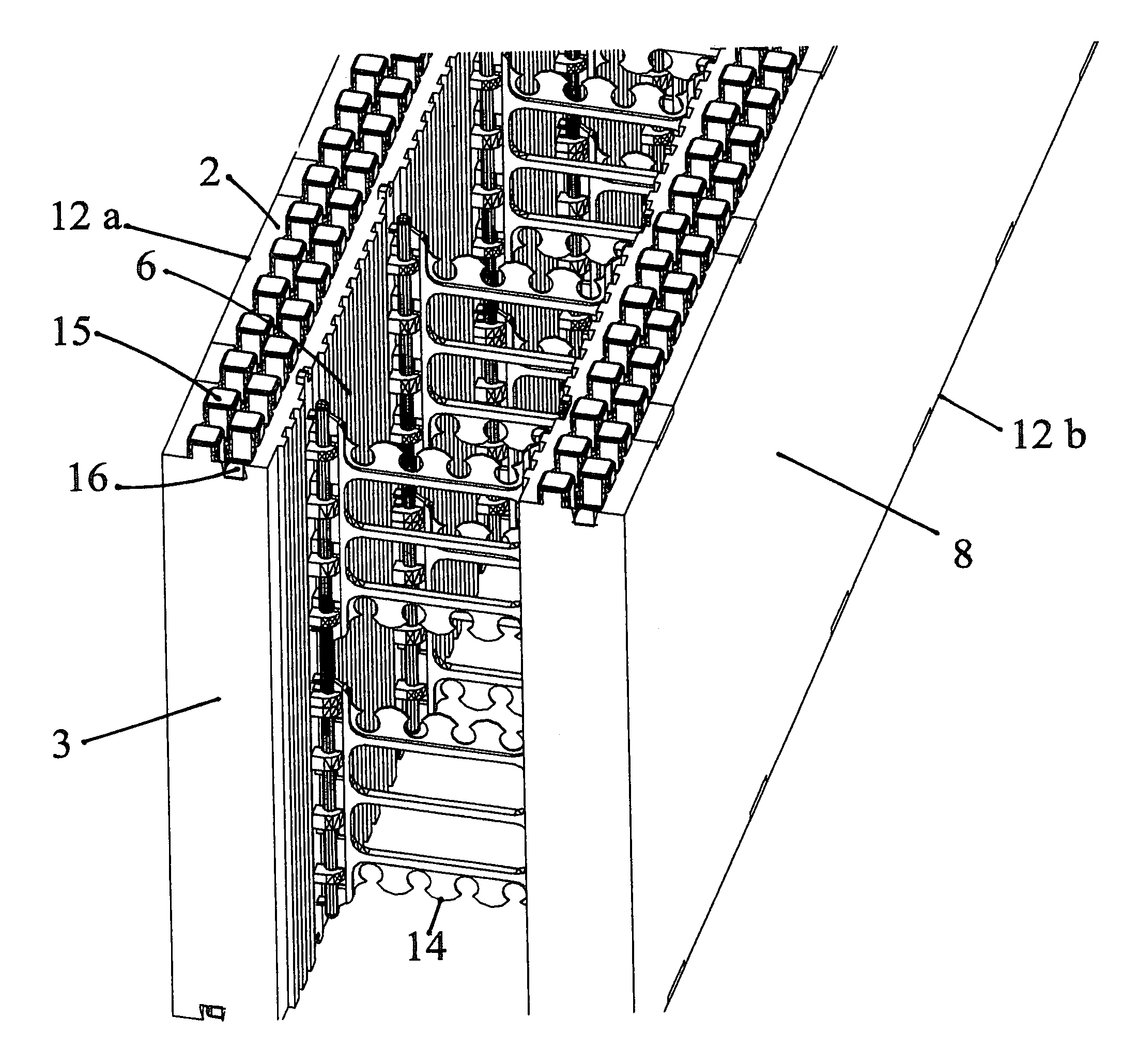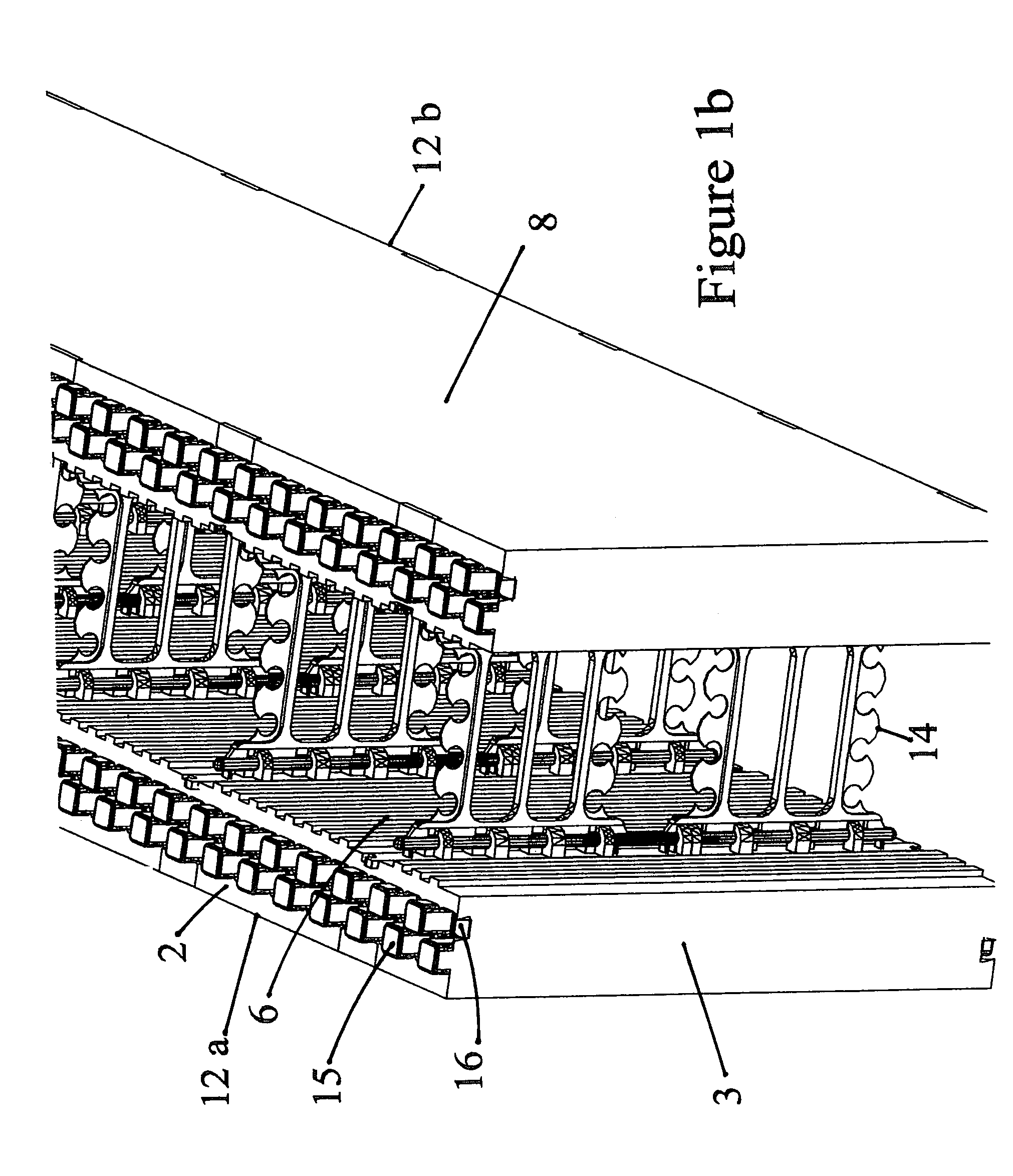Insulated concrete wall forming system and hinged bridging webs
a technology of bridging webs and insulated concrete, which is applied in the direction of load-supporting elements, structural elements, building components, etc., can solve the problems of high energy costs for heating and cooling, time-consuming and wasteful construction types, and the inability to easily form end sections using injection molding processes, etc., to reduce the time of erection of wall forms, reduce waste, and provide rigidity and stability
- Summary
- Abstract
- Description
- Claims
- Application Information
AI Technical Summary
Benefits of technology
Problems solved by technology
Method used
Image
Examples
Embodiment Construction
[0041]The novel features which are believed to be characteristic of the present invention, as to its structure, organization, use and method of operation, together with further objectives and advantages thereof, will be better understood from the following discussion.
[0042]According to this invention, FIG. 1a is a representative illustration of a discrete wall-form component 10 used in building of wall-forms for placement / receiving material such as concrete. The wall-form obtained is of the type comprising a plurality of wall-form components 10 stacked vertically to form a wall as seen in FIG. 2a and FIG. 2b.
[0043]The wall-form component 10 comprises a first foam panel 12a opposed to a second foam panel 12b arranged in spaced and parallel relationship, and tied together by means of a plurality of bridging webs 14. As illustrated in FIG. 1a, FIG. 1b and FIG. 6, the foam panels 12a and 12b, comprise inner and outer surfaces 6 and 8 respectively, top and bottom surface 2 and 4, respec...
PUM
 Login to View More
Login to View More Abstract
Description
Claims
Application Information
 Login to View More
Login to View More - R&D
- Intellectual Property
- Life Sciences
- Materials
- Tech Scout
- Unparalleled Data Quality
- Higher Quality Content
- 60% Fewer Hallucinations
Browse by: Latest US Patents, China's latest patents, Technical Efficacy Thesaurus, Application Domain, Technology Topic, Popular Technical Reports.
© 2025 PatSnap. All rights reserved.Legal|Privacy policy|Modern Slavery Act Transparency Statement|Sitemap|About US| Contact US: help@patsnap.com



